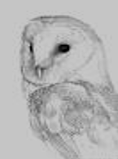
2024 monitoring and ringing effort.
We found a slight increase in records of early broods this year with 77% of chicks ringed in the last 2 weeks of June and the first 2 weeks of July. Brood sizes were the smallest encountered from the time there has been consistency in monitoring since 2020, (viz 2.5, 3.2, 2.6, 2.5, 2.4). The wet late winter and early spring may have led to difficulty in hunting, which did not allow females to put on the weight necessary to lay larger clutches (pers obs).
However, from the 200+ boxes visited by ringers and Schedule 1 agents we found a 48% Barn Owl occupancy – the highest for 5 years.
125 boxes in total were occupied as follows:
94 by Barn Owls, 90 of which contained breeding birds. Other occupants included Stock Dove Columba Oenus, (19 boxes). Western Jackdaw Corvus Mondella (8 boxes). Common Kestrel Falco Tinnunculus (2 boxes). Tawny Owl Strix Aluco. (1 box) and Mandarin Duck Aix galericulata (1 box).
In total two hundred and twenty-four Barn Owls were ringed by Sussex Barn Owl Group, two hundred and twelve chicks and twelve adults. This was the first year the group embarked on colour ringing both adult and young Barn Owls with highly visible, unique rings with letters, this is to determine chick dispersal and adult movements, and it will be a long term meaningful project.
In August and September 4 sightings and 5 recoveries were reported to us.
A box in the upper Cuckmere contained a brood of 3 Barn Owls, 2 of which were considered to be of Dark breasted Tyto Alba guttata and Tyto Alba alba mixed parentage, although a license for DNA sampling was granted it was found the UK DNA database did not contain any guttata illustrations!
Note to all SOS members
Please be vigilant when observing Barn Owls in the field in East and West Sussex and report any colour ring sightings to info@sussexbarnowlgroup.org.
All sightings will be acknowledged.
Terry Hallahan
September 2024